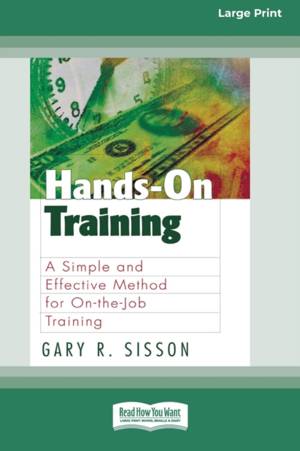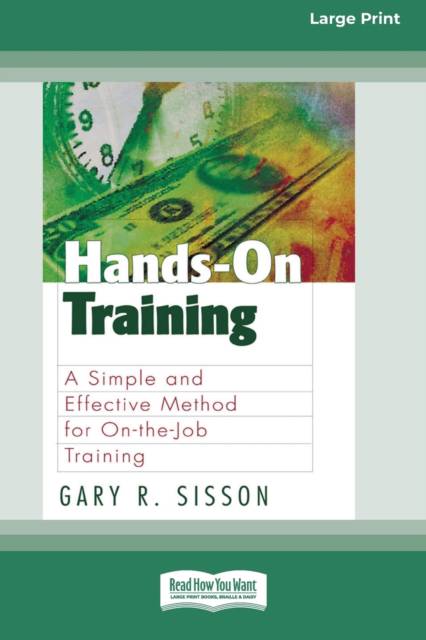
- Afhalen na 1 uur in een winkel met voorraad
- Gratis thuislevering in België vanaf € 30
- Ruim aanbod met 7 miljoen producten
- Afhalen na 1 uur in een winkel met voorraad
- Gratis thuislevering in België vanaf € 30
- Ruim aanbod met 7 miljoen producten
Zoeken
Omschrijving
The first book to detail a systematic, practical, and easily applicable approach to On-the-Job Training (OJT) Outlines a simple 6-step process that those performing OJT can easily follow to train workers to do their jobs Presents a proven approach to training workers on job skills that is truly low cost and high return-and does not require extensive documentation or long development times On-the-Job Training (OJT) is the single most used training method in organizations today. But it is also the most misused-because very few of those doing OJT are ever trained how to do it. In Hands-On Training Gary Sisson draws on his thirty-five years of experience to lay out a simple, systematic approach to OJT that can be understood and applied by anyone in any organization - managers, line or staff supervisors, employees and both internal and external human resource and training professionals. Using the acronym ''HOT POPPER'' to help readers remember the parts of the process, Hands-On Training (HOT) outlines six easy steps: P-Prepare for training O-Open the session P-Present the subject P-Practice the skills E-Evaluate the performance R-Review the subject Within each of the steps are techniques that allow the trainer to apply the system to virtually any job or skill. Hands On Training presents a universal training method that needs little, if any modification to fit different jobs. Its emphasis on structured OJT-one of the few types of training that is theoretically sound and at the same time may be fully integrated into the work place-makes it ideal for training people in applied skills, such as manual sensory skills, procedure following, and problem solving. Truly low-cost, high return training, Hands-On Training is perfect in low budget situations where an organization lacks funds to develop a more formalized training system. It requires very few resources, doesn't require special developmental efforts, and can be totally administered by the workers themselves without creating an extra burden on management.
Specificaties
Betrokkenen
- Auteur(s):
- Uitgeverij:
Inhoud
- Aantal bladzijden:
- 228
- Taal:
- Engels
Eigenschappen
- Productcode (EAN):
- 9780369361110
- Verschijningsdatum:
- 7/05/2010
- Uitvoering:
- Paperback
- Formaat:
- Trade paperback (VS)
- Afmetingen:
- 156 mm x 234 mm
- Gewicht:
- 294 g

Alleen bij Standaard Boekhandel
+ 89 punten op je klantenkaart van Standaard Boekhandel
Beoordelingen
We publiceren alleen reviews die voldoen aan de voorwaarden voor reviews. Bekijk onze voorwaarden voor reviews.











